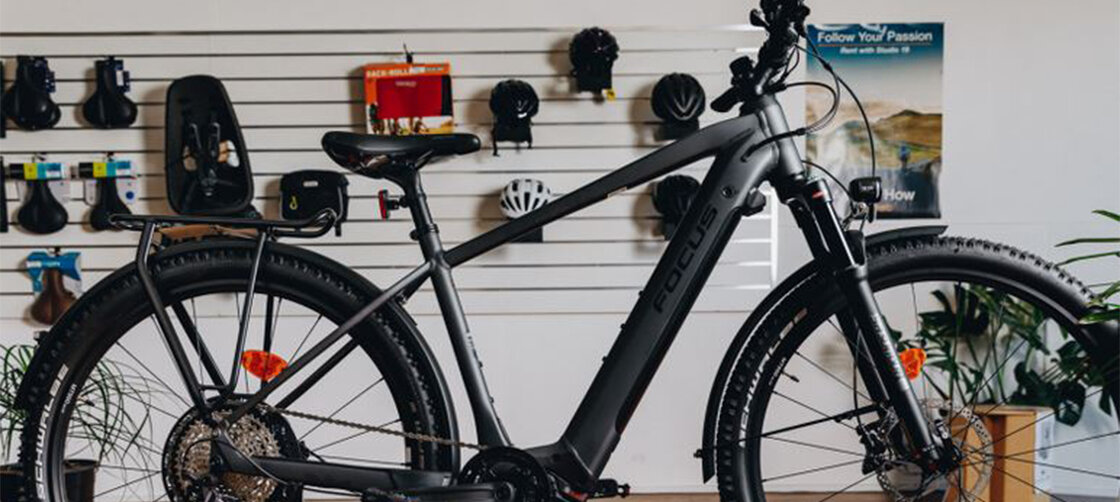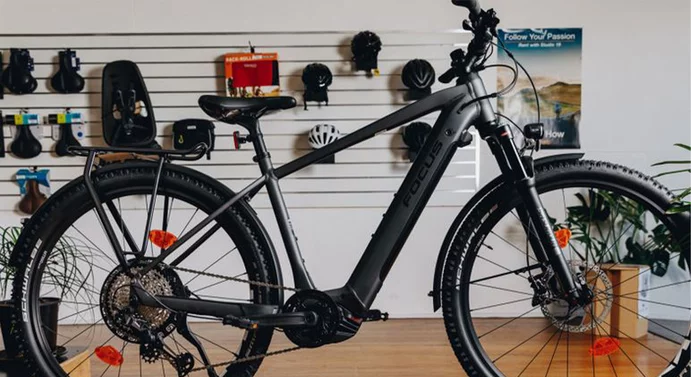The appeal of an eBike
Mechanic Coralie Horel from Velo Electric explains why more people are tapping the intuitive riding system for a little (or big) boost.

If you’ve noticed more eBikes out and about lately, it’s no fluke. Electric bikes are experiencing a steady boom in Australia right now, mostly due to lowering prices and some recent technological improvements.
Or maybe you haven’t noticed them: pedal assist push bikes are also becoming more streamlined, with their trademark motors and batteries standing out much less than in previous incarnations.
“You can barely tell it’s an eBike these days,” says Coralie Horel, an electric bike mechanic and store manager at Velo Electric in Carlton North. “The only thing that’s noticeable is the battery.” And even then, the batteries are sometimes housed inside rather than outside the frame, integrating them even further into the design.

Horel has worked at Velo Electric for six years. One of three Velo shops in the neighbourhood, this one is specifically devoted to the rising market for eBikes. Besides buying them and getting them serviced on-site, customers can hire an eBike from the shop or even take one for a free test ride with an instructor.
As for their growing appeal, Horel notes the bikes are more durable than in the past. They’re also quite versatile, suited to commuting through a bustling city every day or riding through rocky trails on the weekends. The range of common eBikes now includes city bikes, mountain bikes, trekking bikes (which sit somewhere between the first two), and cargo bikes, which can easily transport your shopping or even a child-sized passenger.
“The appeal of an eBike is that it makes it so much easier to ride around,” Horel says. “You can ride a longer distance and more often, because it’s not such a struggle. It gives you the option to ride more because it’s just so enjoyable.”
Newcomers might expect eBikes to offer a sudden kick of power or else eliminate the need for pedalling altogether. But the systems are more subtle than that, making up for what you’re not giving in terms of power. For example, you’ll receive more torque when going uphill than on a flatter surface.
“It doesn’t give you one kick,” says Horel. “They actually have a sensor, [so] if you’re putting a lot of pressure on the pedals, it’ll put more kick in. If you don’t use too much pressure, it will give you a smaller kick. It’s a smart way of distributing the torque.”
Electric systems like the Bosch eBike Systems – which power many different brands – rely on a customisable range of modes. Bosch systems offer four distinct modes, ranging from 40 per cent to 400 per cent support. And the 400-watt power pack means you can ride for 40 to 60 kilometres on full turbo mode or 120 kilometres on eco mode before you need to recharge the battery, which can usually be done in less than six hours.
The benefits of traditional biking are all there – fresh air, low environmental impact, regular exercise, streamlined storage – but eBikes mean that even when you’re having a low-energy day, biking never feels like a chore. If you’re not up for a daunting physical task or are simply facing an intimidating hill, an eBike will help you out along the way.
“It’s still exercise with an eBike,” says Horel. “But one day you feel tired so you put on turbo.” She’s been riding eBikes herself for half a decade now, after realising how well they handle steeper terrain. She now often gets out into nature on a mountain eBike, which means she can focus on the actual scenery instead of demanding cycling.
“I enjoy the ride instead of struggling,” she says.